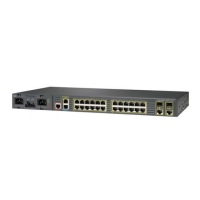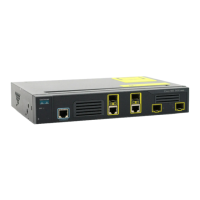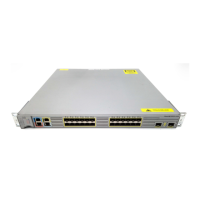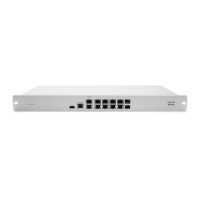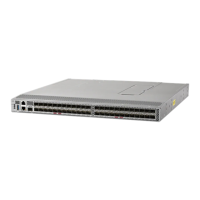35-22
Cisco ME 3400 Ethernet Access Switch Software Configuration Guide
OL-9639-07
Chapter 35 Configuring IP Unicast Routing
Configuring OSPF
Beginning in privileged EXEC mode, follow these steps to set an interface to advertise a summarized
local IP address and to disable split horizon on the interface:
To disable IP summarization, use the no ip summary-address rip router configuration command.
In this example, the major net is 10.0.0.0. The summary address 10.2.0.0 overrides the autosummary
address of 10.0.0.0 so that 10.2.0.0 is advertised out interface Gigabit Ethernet port 2, and 10.0.0.0 is
not advertised. If the interface is in Layer 2 mode (the default), you must enter a no switchport interface
configuration command before entering the ip address interface configuration command.
Note If split horizon is enabled, neither autosummary nor interface summary addresses (those configured with
the ip summary-address rip router configuration command) are advertised.
Switch(config)# router rip
Switch(config-router)# interface gi0/2
Switch(config-if)# no switchport
Switch(config-if)# ip address 10.1.5.1 255.255.255.0
Switch(config-if)# ip summary-address rip 10.2.0.0 255.255.0.0
Switch(config-if)# no ip split-horizon
Switch(config-if)# exit
Switch(config)# router rip
Switch(config-router)# network 10.0.0.0
Switch(config-router)# neighbor 2.2.2.2 peer-group mygroup
Switch(config-router)# end
Configuring OSPF
Open Shortest Path First (OSPF) is an Interior Gateway Protocol (IGP) designed expressly for IP
networks, supporting IP subnetting and tagging of externally derived routing information. OSPF also
allows packet authentication and uses IP multicast when sending and receiving packets.
This section briefly describes how to configure O SPF. For a complete description of the OSPF
commands, see the “OSPF Commands” chapter of the Cisco IOS IP Command Reference, Volume 2 of
3: Routing Protocols, Release 12.2.
Command Purpose
Step 1
configure terminal Enter global configuration mode.
Step 2
interface interface-id Enter interface configuration mode, and specify the Layer 3
interface to configure.
Step 3
no shutdown Enable the interface if necessary. By default, UNIs and ENIs
are disabled and NNIs are enabled.
Step 4
ip address ip-address subnet-mask Configure the IP address and IP subnet.
Step 5
ip summary-address rip ip address ip-network mask Configure the IP address to be summarized and the IP
network mask.
Step 6
no ip split horizon Disable split horizon on the interface.
Step 7
end Return to privileged EXEC mode.
Step 8
show ip interface interface-id Verify your entries.
Step 9
copy running-config startup-config (Optional) Save your entries in the configuration file.
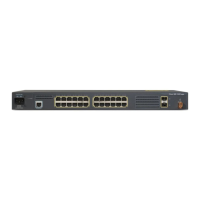
